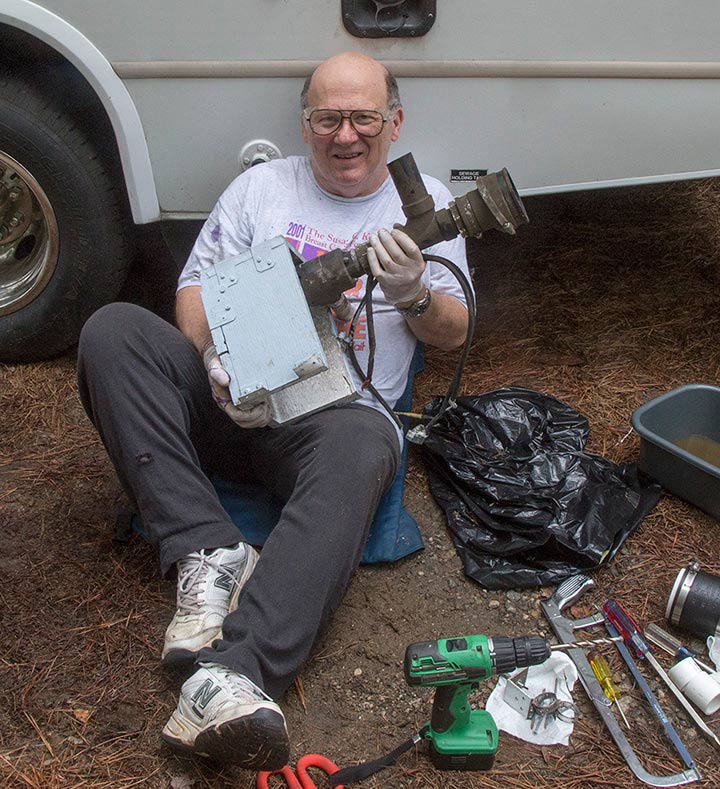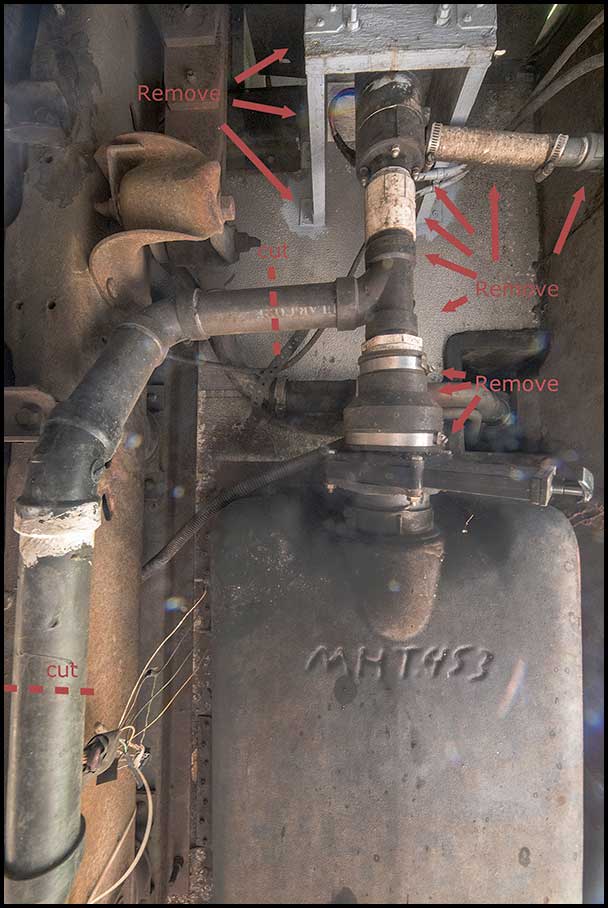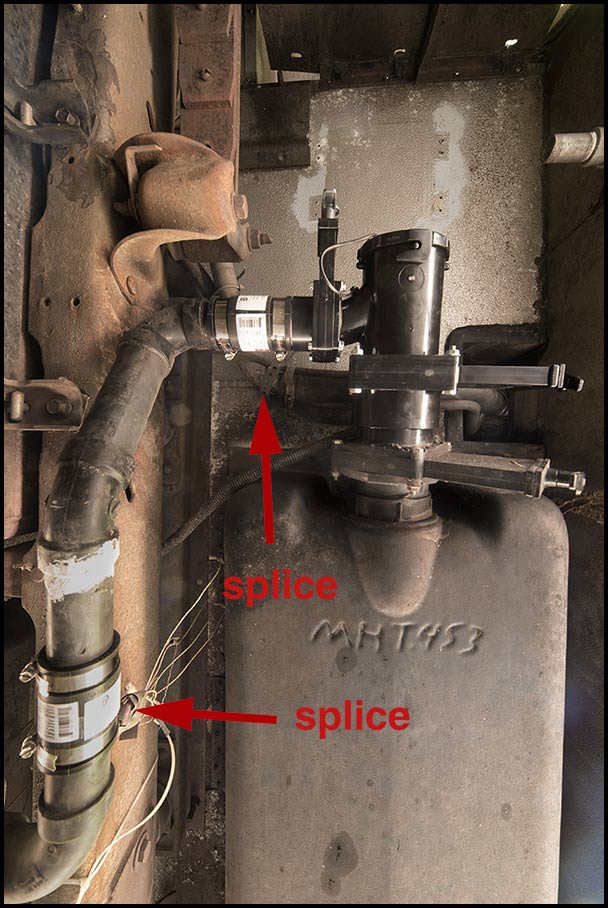| |
Through Rugged Waste to the Stars*
8/24/2015. Twenty months ago, I bought an RV to use as a dark-sky hacienda. You can tell its previous owner was an electrical engineer by examining its plumbing.
The macerator pump Larry installed quit working on our foray to Doughton Park. To attempt the service endorsed by Google would mean removing both dually wheels and a mudflap on the driver's side then breaking through a wooden partition, all with uncertain results. Bless him, all the electrics are just fine and Larry has answers and documentation for everything electronic, but I elected to jettison the macerator pump and rely on gravity, especially since the way I aim to use this RV (only now and then, sometimes in cold conditions, and sometimes left in a harsh climate imperfectly winterized) would invite future calamities of the same sort.

So, I drilled drain holes to empty the pipes of whatever filth was standing in them, then cut the 1.5-inch grey water drain line, loosened and pried off the connections to the black water holding tank's knife valve, removed the 3/4-inch hose connection from the macerator's output nozzle, cut the power lines to the pump, removed the switch, and unscrewed the macerator pump's mounting box. Then I glued in a new 3-inch PVC combination drain with dogs to attach a black water "stinky slinky" and redundant knife valves on both the 3-inch black water and 1.5-inch grey water lines. Finally, I cut the 1.5 inch grey water line much farther back, brought it inside to a miter saw, trimmed the cuts square and adjusted its length to match the new valves. Then I fit the new gravity-only drain lines and valves back together with flexible connectors and pipe clamps. (This is why you shove a wide angle lens up in under the RV and make a picture of what's there, something to study and mark up and measure late at night.)
The "before" image shows the plan of attack, and the "after" shows what's under there now. Not that I think visitors to this page will give a damn, but if / when something breaks, I want to be able to refer to how it's supposed to be without crawling around in the, uhm, muck:
 
I didn't really intend to have two valves on the black water dump line, but the first one had no dogs for a hose coupling, and the pieces fit. So I thought about whether (and how) to take the old one off, and I spent a couple of cups of coffee wondering why not just do it this way. Then I did. I'm not quite satisfied whether this modification doubles my opportunities for slow leaks or halves my chances of a catastrophic leak. It might do both. The valve seems solidly glued on there, especially with the 1.5-inch line coming in from the side to help keep things stabilized, but a good wrap of the right bonding material around that 3-inch connection would make me feel better.
* Yes, as a matter of fact, I do still need to read Harlow Shapley's
autobiography, Through Rugged Ways to the Stars.
Except where noted, deep-sky photos are made with an SBIG ST2000XM CCD behind a 10-inch Astro-Tech Ritchey-Chretien carried on an Astro-Physics Mach1GTO. The CCD is equipped with Baader wide- and narrow-band filters. The internal guide chip of the CCD most often keeps the OTA pointed in the right direction (I'll let you know when an OAG or guidescope takes its place). Camera control and guiding are handled by Maxim DL 5.12. The stock focuser on the AT10RC has been augmented with Robofocus 3.0.9 using adapters turned on the lathe downstairs. A Canon 6D and a modded 50D find themselves mounted on an Orion 10" F4 Newtonian or carrying widefield glass on an iOptron Skytracker. Beginning in May 2013, PixInsight has taken over more and more of the heavy lifting -- alignment, stacking, gradient removal, noise-reduction, transfer function modification, color calibration, and deconvolution. Photoshop CS4 et seq and the Focus Magic plugin get their licks in, too.
:: top ::
|